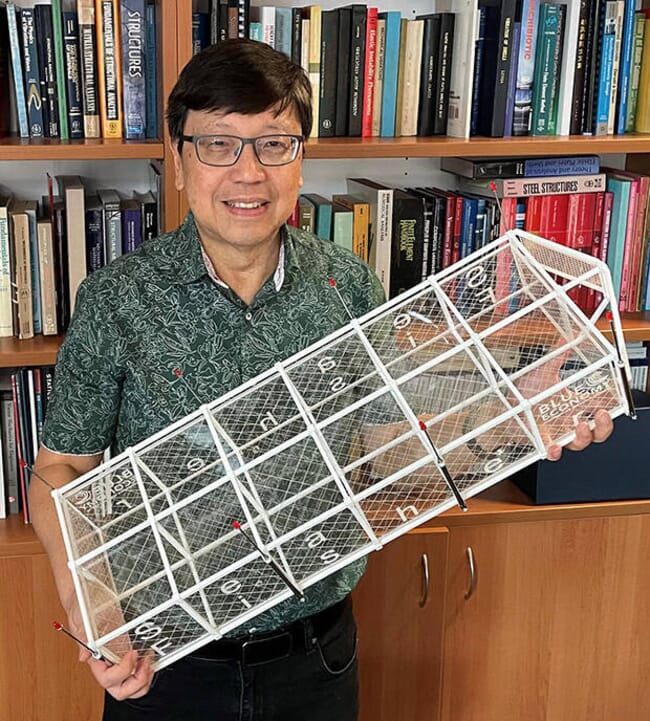
© University of Queensland
The University of Queensland has co-led a project to design a cost effective yet robust pen to expand fish farming into deeper ocean areas, aiming to overcome increasing competition for space in nearshore waters.
“Moving to deeper and cooler waters is great for the ocean environment and for fish health and welfare but if a pen is too flimsy, large ocean waves during storms would quickly tear it apart,” said Professor Chien Ming Wang, University of Queensland School of Engineering, in a press release from the institution.
“This solution – named SeaFisher – bundles high-density polyethylene (HDPE) pipes together with custom brackets and connectors to create a frame so we have strength in a lightweight structure,” he explained.
Whilst the offshore environment can provide greater area for fish farming, the rough weather conditions found further from the coast pose new challenges for offshore cage design.
“To keep the pen and the fish safe, water pumps fill the pipes so it can be submerged in stormy weather and when the danger has passed, that ballast can be emptied so the pen rises to the surface again,” said Professor Wang.
“A front shield diverts debris around the pen while smooth, reinforced PET plastic netting keeps predators out,” he added.
The pen is estimated to initially cost around $6 million, a fraction of the cost of the more rigid offshore fish farming structures currently being used in the northern hemisphere. Additionally, modelling of the SeaFisher pen structure suggests that it could produce potentially ten times the quantities of fish possible with current offshore pens, according to Professor Wang.
“This is a modular system of 20 metre cubic cages, linked two abreast to enable easy access for monitoring, feeding, and harvesting the fish stock,” he said.
“We estimate that each cubic cage could comfortably house 24,000 fully grown finfish. It could be used to farm different finfish species next to each other, and be adapted to grow seaweed, utilising waste from the fish pens to fertilise the plant crop,” he added.
Importantly, Professor Wang notes that the infrastructure used to anchor the cages to the seafloor has been designed to cause minimal disturbance to the benthos.
“By mooring the pen with a chain attached to a single suction anchor that allows it to move with water currents, the impact on the ocean floor is minimal,” he said.
The project, which was commissioned by the Blue Economy Cooperative Research Centre and included collaboration from researchers at Griffith University and the University of Tasmania, has been patented, and will now move into scale-model testing before full-size prototypes are constructed.




